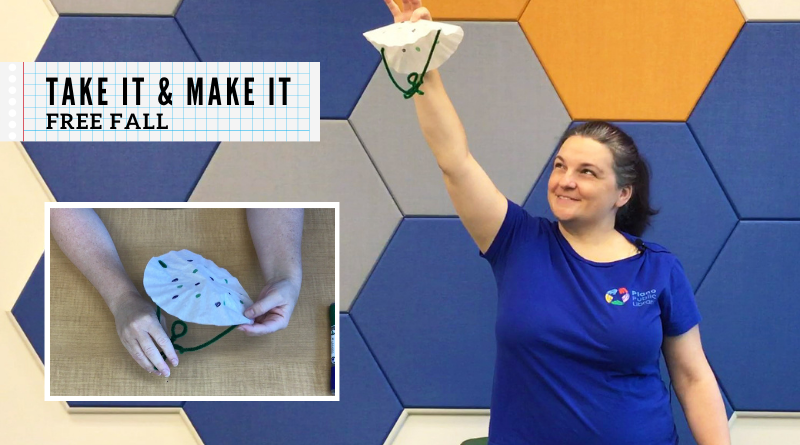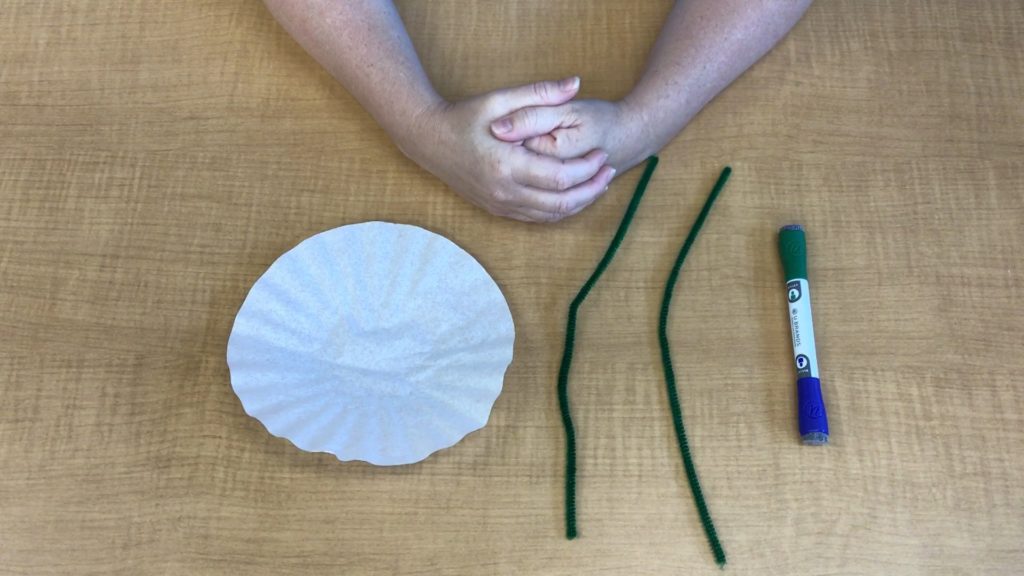
STEAM Connections: Free Fall
Have you ever seen a skydiver jump out of an airplane? After jumping, the skydiver falls through the air, and then opens the parachute! The parachute slows the skydiver down, so they fall gently toward the ground and can make a safe landing. But, have you ever thought about how parachutes work? How does the parachute do this? A parachute works by increasing your air resistance as you fall. Let’s learn more about this.
Content Overview
A parachute works by increasing air resistance as you fall. Air resistance is a force that acts in the opposite direction of moving objects. This is a fancy way of saying that air resists, or slows, things that are moving. To better understand this concept, let’s take a closer look at air itself.
Although the space around you seems to be completely empty, it’s filled with air. And air is made of matter, which means that when you walk through air, every move you make is pushing matter out of the way. But, matter is pushing back on you too! You probably don’t feel it when you’re just walking around, but when you start running or biking, you might feel a force, like the wind is pushing against you. This force has a name: air resistance, or drag! The faster something moves, the more air resistance or drag it creates.
When a skydiver jumps out of an airplane, gravity pulls them towards the ground. The force of gravity can make an object fall very fast. And the fall keeps getting faster. How do you slow yourself down so you can land safely? You want to make more air bump into you for more air resistance – that’s how a parachute helps. It makes more space for the air to run into: an open parachute has a very large surface area, and the bigger the surface area for air to push against, the greater the air resistance or drag. As the parachute falls, the air resistance pushes the parachute back up, until the drag just balances out the pull of gravity. At that point, you begin to fall at a slower, steady speed, until the parachute drops you gently to the ground.
Hands-On Exploration
Let’s construct a parachute prototype. A prototype is a typical model of something. Engineers use prototypes to compare factors that affect a design and analyze the data they collect during testing to find the best solution. Let’s look at the science behind air resistance and see how it works by creating our very own parachute!
Supplies

- Coffee Filter
- Pipe cleaner
- Markers (optional)
Instructions
- First, you’ll make a stick person from ONE pipe cleaner. Twist a loop in the middle for the head and adjust to make it rounder, bend back both ends for the arms, put a couple of twists together for the body, and make the rest for legs. Feel free to bend up the very end for feet. Add another twist in the neck and arms
- Take a second pipe cleaner and poke one end through the edge of a coffee filter. Fold over once to secure. Take the free end and run through the “hands” of the stick figure (his arms are loops). Connect the free end to the coffee filter and bend up.
- Decorate your parachute with markers. (optional)
- Open up your parachute and grasp it at the center point. Make sure to leave the parachute open. Raise your arm as high as you can and drop the parachute. Watch it float to the ground!
Talk About the Activity
- Can you slow the fall of your parachute even more?
- Change the height from which the parachute is dropped: Will it pick up speed before air resistance slows it down?
- How will using a different material (paper bag, plastic bag, piece of tissue, single-ply square paper napkin, cotton cloth, silk, etc.) for a parachute make it fall faster or more slowly?
- How will increasing the diameter of the parachute increase its size, or surface area?
- Test how surface area changes the performance. See if you can tell if the size makes a difference in the parachute performance. It’s a good idea to write the results of a piece of paper to keep track.
- Do bigger parachutes have more air resistance, or drag force, than smaller parachutes?
- Try making parachutes of different shapes (circle, rectangle, triangle, etc.) Will this affect how well it works?
Continued Learning
We have learned that when a parachute opens, it is a second force that works against gravity. This is air resistance, also known as drag. Drag is a force that acts in the opposite direction of moving objects. Drag that happens in the air is known as air resistance. If there is no air resistance, after you let go of an object, the only force on it is the gravitational force.
As an object falls, we can increase its drag by creating something like a parachute which expands surface area and slows down a fall. Air resistance is affected by different variables, including surface area and speed. Air resistance always tries to slow down a moving object. Just observe your toy parachute and find out!
Check It Out: Library Resources

Let’s Investigate Forces by Jacqui Bailey
Fantastic Forces and Motion by Joy Lin
Forces and Motion by John Graham
Explore Forces and Motion!: With 25 Great Projects by Jennifer Swanson
Forces and Motion by Jane Weir
Forces Make Things Move by Kimberly Bradley




